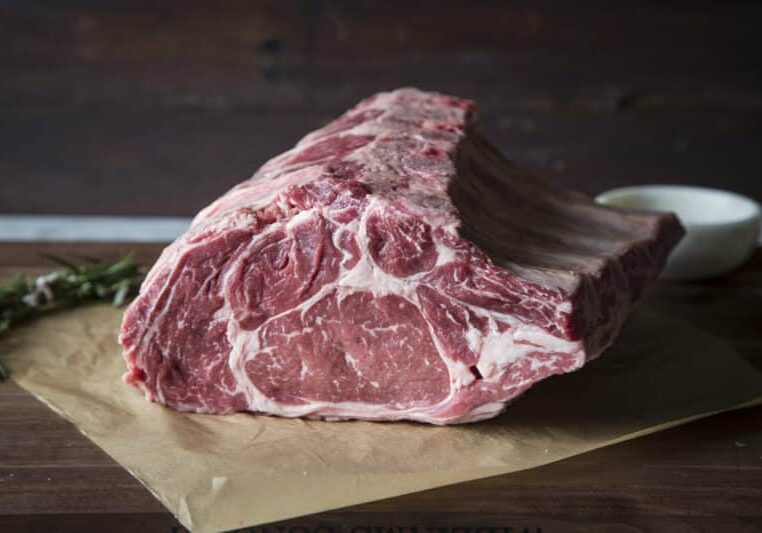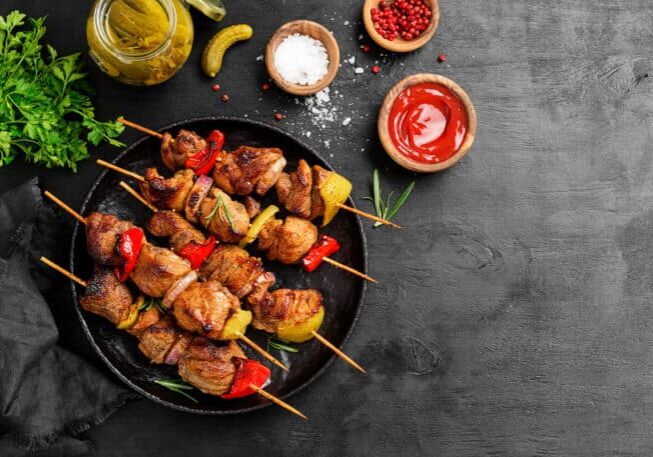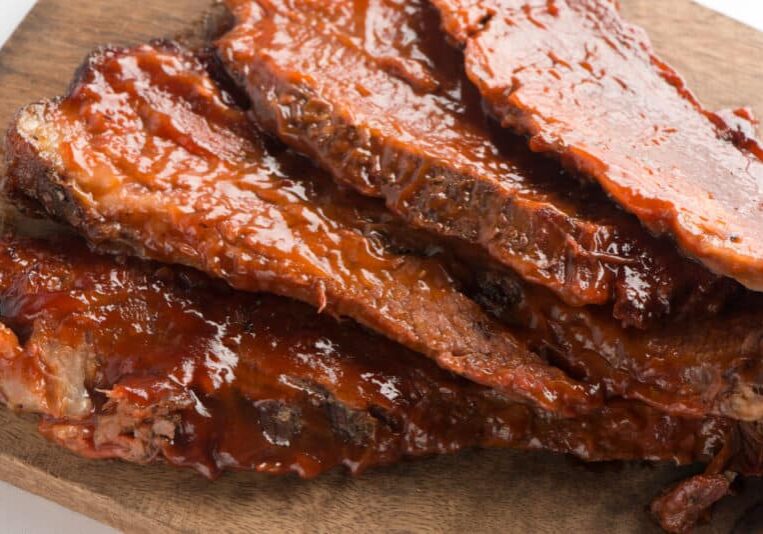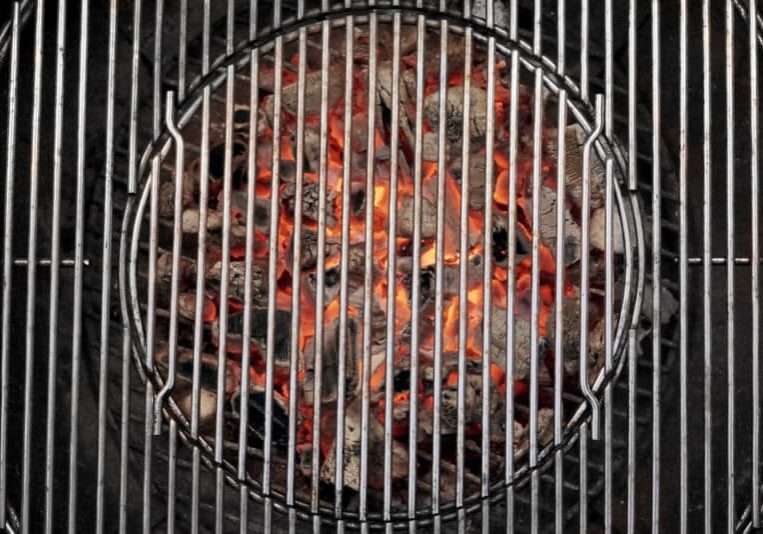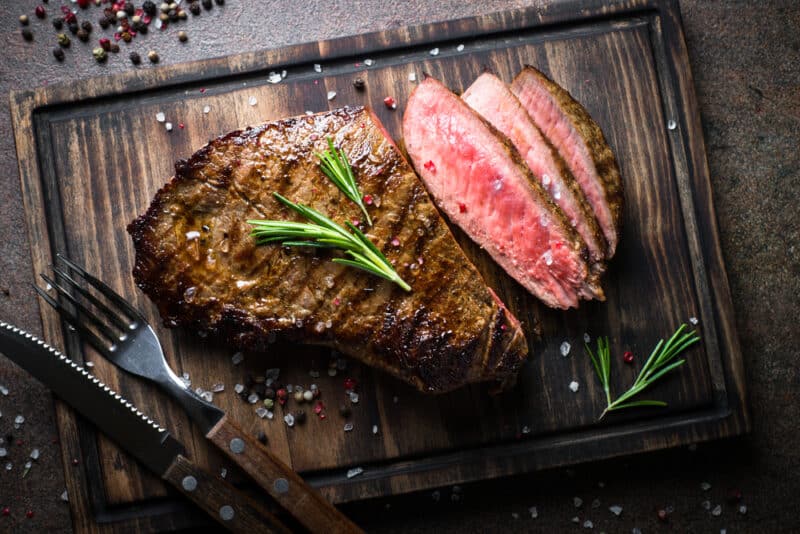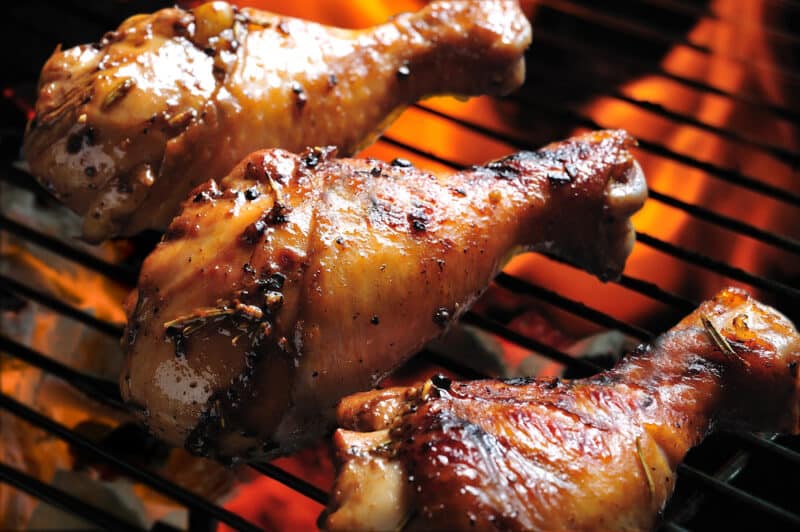What is Flank Steak? [See How to Cook it]
TheGrillingMaster.com is reader-supported. If you buy something using the links on our site, we might earn an affiliate commission at no added cost to you. This helps us pay our staff to keep making awesome content for you!
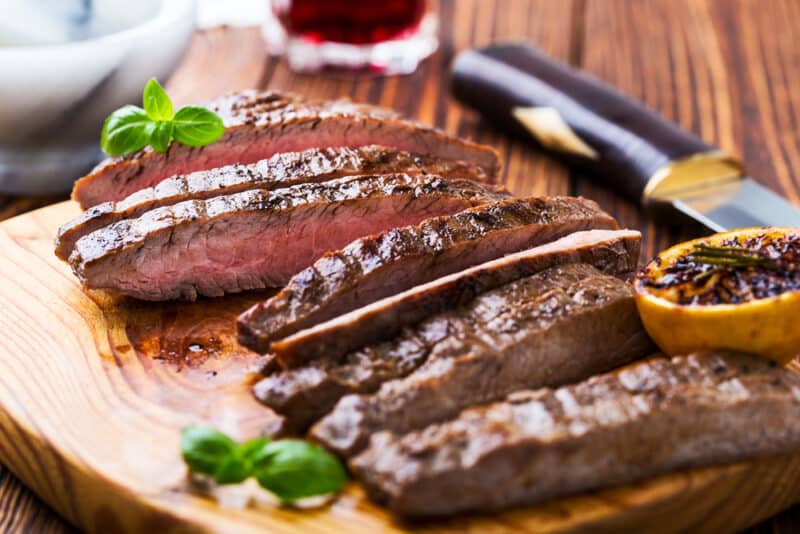
Flank steak is a flavorful, lean cut of beef that comes from the belly close to the rear end of the cow, best known for its robust flavor and suitability for marinating and grilling.
Understanding Beef Cuts
If you’ve ever stood at a butcher’s counter, you may have been overwhelmed by the array of beef cuts on display. Let’s simplify this a bit. Imagine a cow standing up.
Now think of it as a map. Different areas of the cow yield different cuts of beef, each with its own unique texture and flavor. The flank steak is one cut that often flies under the radar, but I promise you, it’s a true hidden gem.
Flank steak comes from the abdominal muscles or lower chest of the cow, located right near the rear end.
This area is known for its hard-working muscle fibers. It’s not the most tender cut, and there’s a reason for this. Cows don’t have collarbones, which means their flank and shoulder muscles do most of the heavy lifting. This is why the flank steak is lean with long, noticeable muscle fibers.
You might be wondering, “How does flank steak differ from similar cuts?”
Great question.
Flank steak is often confused with skirt and hanger steak. Although they’re all classified as “plate” cuts and are located in similar areas, there are differences.
Skirt steak is from the plate area of the cow, directly below the rib. It’s known for its beefy, robust flavor, much like the flank, but it’s thinner and has a more pronounced grain.
Hanger steak, on the other hand, “hangs” from the diaphragm area. It’s also flavorful but tends to be more tender than flank steak. You can see that while they’re cut from the same general area, each steak brings something different to the table, with the flank steak standing out with its own distinctive taste and texture.
In my years of cooking, I’ve learned to appreciate each cut for what it brings to a dish. The flank steak’s robust flavor and lean nature make it ideal for dishes that require marinade and high-heat cooking methods like grilling or broiling.
Yes, it might require a bit more attention and preparation compared to some of the more popular cuts, but trust me, it’s worth it.
The world of beef cuts can be complex, but understanding the nuances of each cut, especially a versatile one like flank steak, can truly elevate your cooking game. Stay tuned as we dive deeper into how to prepare and cook this underestimated cut to perfection.
Related Reading: See how to cook a steak on a griddle.
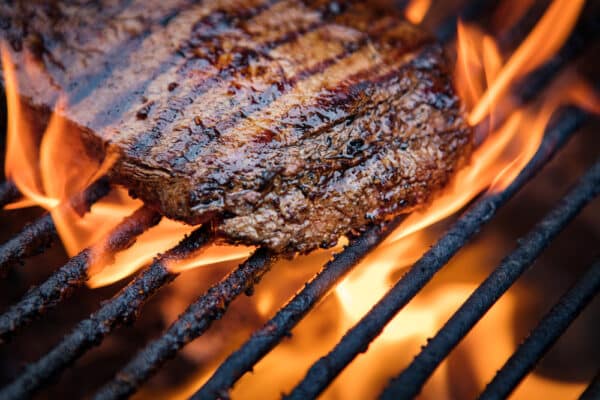
The Characteristics of Flank Steak
Flank steak is often praised for its strong, beefy flavor. Unlike more tender cuts like filet mignon that have a more subtle taste, flank steak announces itself proudly on your palate. The robust flavor is one of the reasons I find this cut so enchanting; it stands up well to a variety of flavors, whether you’re working with a simple salt-and-pepper rub or a bold, spicy marinade.
Now, let’s talk about the texture and grain of flank steak. As I mentioned before, flank steak comes from a hard-working part of the cow, resulting in long, noticeable muscle fibers or “grain.” The grain of the meat plays a crucial role in the preparation, cooking, and serving of flank steak. You’ll see that these long muscle fibers run lengthwise through the steak, and how you cut it will significantly impact the tenderness of the meat.
Flank steak is lean. Some may view this as a disadvantage because leaner meats can be tougher. But let me offer a different perspective. The lack of fat means you’re getting a piece of meat that’s high in protein but lower in calories compared to more marbled cuts.
And while it’s true that flank steak isn’t as naturally tender as some other cuts, this is where your culinary skills come into play. The lean nature of flank steak makes it an ideal candidate for marinating.
[PRO TIP] The right marinade can help tenderize the steak while also infusing it with flavor.
The lean nature of the meat makes it cook quicker, which can be an advantage if you’re pressed for time. However, it also means that overcooking can easily result in a tough steak. That’s why it’s essential to monitor the cooking closely.
What I find most appealing about flank steak is how its characteristics interplay to create an exciting challenge and opportunity in the kitchen. It’s like a canvas waiting to be painted on.
Related Reading>> Learn how to best defrost steak here.
With its hearty flavor, distinctive grain, and lean nature, you’ve got the starting point for a multitude of delicious meals. From traditional grilling to more experimental culinary techniques, flank steak is a cut that invites creativity and rewards skill. In the next section, we’ll talk about how to prepare flank steak, helping to ensure that every bite you take is as tender and flavorful as can be.
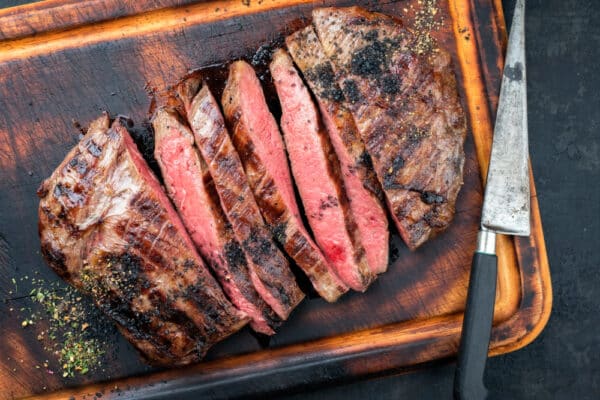
How to Prepare Flank Steak
One thing I’ve learned from years of grilling is that preparation is key, and this is especially true for a cut like flank steak. Its lean nature means it benefits from a good marinade, which serves two purposes: flavor infusion and tenderization. Since flank steak has a robust flavor, it can stand up to stronger marinades.
You can play around with ingredients like soy sauce, citrus juices, garlic, and fresh herbs to create a marinade that suits your taste.
Before marinating, I often recommend scoring the steak. This involves making shallow cuts on the surface of the meat, creating a kind of cross-hatch pattern. It not only looks nice but helps the marinade penetrate more deeply into the steak. Remember to score lightly; we don’t want to cut through the steak.
Trimming is also important, although flank steak usually doesn’t require much. Sometimes, there’s a layer of tough connective tissue on one side of the steak. I advise trimming this off before cooking. Not all flank steaks will have this, but if yours does, don’t skip this step.
After scoring and trimming, it’s time to season your steak. This process is an opportunity to add another layer of flavor. If your marinade is already potent, you might only need a bit of salt and pepper. If your marinade is on the subtler side, you can be more adventurous with your seasonings.
Once your steak is seasoned, it’s ready for the marinade. Put the steak in a zip-top bag or a dish and pour over your marinade. Make sure the steak is fully submerged. I recommend marinating flank steak for at least two hours, but if you can do it overnight, even better. The longer you marinate, the more flavor gets into the meat, and the more the tough muscle fibers break down.
After marinating, it’s crucial to pat the steak dry before cooking. This helps you achieve a perfect sear when it hits the grill or pan. Also, let the steak sit out of the fridge for about 15 minutes to get it closer to room temperature for even cooking.
Preparing flank steak isn’t just about seasoning and marinating. It’s an art. It’s your first brushstroke on that canvas I mentioned earlier. With careful preparation, you’re setting the stage for a delicious meal. Up next, we’ll look at my favorite part: the cooking.
Related Reading>> Learn how to best reheat steak here.
Cooking Techniques for Flank Steak
When it comes to cooking flank steak, I believe in the KISS principle – Keep It Simple, Steak-lover. Given its robust flavor and lean texture, flank steak benefits from fast, high-heat cooking methods. Grilling, broiling, and pan-searing are my personal favorites.
Grilling flank steak is a delightful experience. Preheat your grill to high and make sure it’s clean. Place the steak on the grill and cook it for about 4-5 minutes on each side. This should give you a medium-rare steak, which in my opinion, is the best way to enjoy flank steak. Overcooking can lead to a tougher texture, so keep a close eye on it.
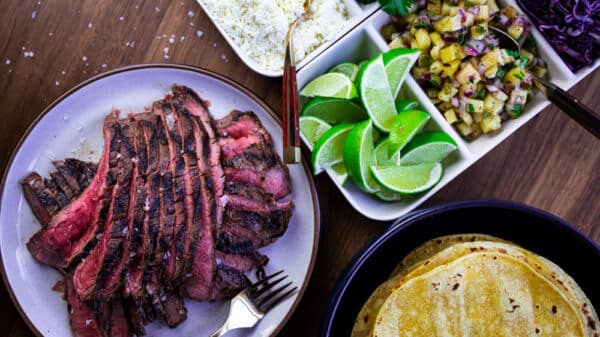
If grilling isn’t an option, broiling or pan-searing are great alternatives. For broiling, position your oven rack so the steak is about four inches from the broiler. Then broil for about 5-6 minutes per side. For pan-searing, get your skillet ripping hot, add a touch of high smoke-point oil like grapeseed or canola, then sear the steak for about 3-4 minutes on each side.
No matter the method, the critical point is not to overcook flank steak. Aim for medium-rare to medium, or an internal temperature between 130-135 degrees Fahrenheit. A reliable meat thermometer is your best friend here.
Once it’s cooked, let the steak rest! I cannot stress this enough. Resting allows the juices to redistribute throughout the steak. If you cut into it too soon, those delicious juices will end up on your cutting board instead of in your mouth. Give it a good 10 minutes to rest.
In all these methods, you’ll notice that we’re respecting the simplicity of the meat while also aiming to enhance its natural flavor. That’s the secret to a great flank steak. Just remember to stay vigilant with your timing, and the reward will be a beautifully cooked, flavorful piece of meat.
Carving and Serving Flank Steak
Carving flank steak isn’t just about slicing up your cooked meat—it’s an art. Because of its distinct grain, the way you cut flank steak can make the difference between a chewy bite and a tender, flavorful mouthful. The golden rule here is to always cut against the grain.
Let me explain what that means. If you look closely at your cooked flank steak, you’ll notice lines running in one direction. Those lines are the muscle fibers or “grain,” and they’re what give flank steak its unique texture. Cutting against the grain means slicing perpendicular to those lines, essentially shortening the muscle fibers. This makes each bite more tender and enjoyable.
Use a sharp knife and aim for thin, diagonal slices. Start at one end of the steak and cut at a roughly 45-degree angle to the grain. You’ll be left with slices that showcase the beautiful sear on the outside and the juicy, tender inside.
As for serving sizes, a pound of flank steak will typically serve three to four people, assuming you’re pairing it with a couple of side dishes. This is a lean cut of beef, so while it’s satisfying, it doesn’t have the same fat content that might leave you feeling overly full.
Speaking of side dishes, flank steak is versatile enough to pair well with a wide range.
For a classic summer meal, you might serve it with corn on the cob and a fresh salad. If you’re in the mood for comfort food, mashed potatoes or mac and cheese make great accompaniments. For a lighter option, consider a fresh, tangy coleslaw or a vibrant mixed vegetable sauté.
Whether it’s a weeknight dinner or a special occasion, serving flank steak presents an opportunity to impress your guests not just with your cooking skills, but also with your presentation. Place those perfectly sliced pieces of steak on a platter, arrange your chosen sides, and get ready to hear the oohs and aahs.
Next up, I’ll share some of my favorite recipes to make with flank steak.
Flank Steak Recipe Suggestions
-
Traditional London Broil: While London Broil originally referred to a method of preparation and not a specific cut, flank steak fits the bill perfectly. Marinated in a blend of soy sauce, honey, garlic, and ginger, then broiled and sliced thin, this dish is a classic for a reason.
-
Mexican Carne Asada: Flank steak shines in this traditional Mexican dish. Marinated in a combination of citrus juices, garlic, jalapenos, and cilantro, then grilled to perfection, it’s perfect for tacos, burritos, or simply served with rice and beans. See my guide on easy brisket tacos here.
-
Asian-Style Flank Steak: Marinade the steak in a mixture of soy sauce, brown sugar, fresh ginger, garlic, and sesame oil. Grill it and pair with stir-fried vegetables and steamed rice for a complete meal.
-
Flank Steak Fajitas: Season the flank steak with a blend of cumin, chili powder, and garlic, then grill and slice thin. Serve with sautéed peppers and onions, sour cream, and fresh guacamole for a Tex-Mex treat.
-
Flank Steak Pinwheels: Stuff and roll your flank steak with a combination of spinach, sun-dried tomatoes, and parmesan cheese. Slice into pinwheels before grilling for a stunning presentation.
-
Grilled Flank Steak Salad: Slice grilled flank steak and serve it over a bed of mixed greens, cherry tomatoes, cucumber, and feta cheese. A balsamic vinaigrette rounds out this light and refreshing dish.
-
Flank Steak Stir Fry: Quickly sear sliced flank steak in a hot wok, then remove and stir fry a colorful mix of your favorite veggies. Add the steak back in with a sauce made from soy sauce, garlic, and a touch of honey.
-
Flank Steak Roulade: For a more upscale preparation, stuff the flank steak with a mix of goat cheese, roasted red peppers, and fresh basil, then roll, tie, and bake it. Slice into beautiful spirals before serving.
-
Italian-Style Stuffed Flank Steak: Imagine your steak filled with prosciutto, provolone, and fresh herbs, then rolled, grilled, and sliced into medallions. It’s a Mediterranean delight!
-
Flank Steak Sandwiches: Marinate, grill, and slice your flank steak, then pile it high on crusty bread with caramelized onions and a horseradish cream sauce for a hearty sandwich.
Each of these recipes highlights the incredible versatility of flank steak. Whether you prefer traditional or adventurous dishes, there’s a flank steak recipe that’s sure to delight your taste buds.
In the next section, I will address some common questions about flank steak, helping you to become a true flank steak connoisseur.
Flank Steak FAQ’s
-
What part of the cow does flank steak come from? Flank steak comes from the abdominal muscles or lower chest of the cow, located near the rear end.
-
Is flank steak the same as skirt steak? No, while they’re both flavorful and robust, flank and skirt steaks are different cuts. Skirt steak comes from the diaphragm muscles of the cow and tends to be thinner with a more pronounced grain than flank steak.
-
How do I tenderize flank steak? Flank steak can be tenderized using a marinade with acidic ingredients like citrus juices or vinegar, which help break down tough muscle fibers. Scoring the steak before marinating can also help tenderize it.
-
Why should I cut flank steak against the grain? Cutting against the grain shortens the long muscle fibers in the flank steak, making it easier to chew and more enjoyable to eat.
-
What internal temperature should flank steak be cooked to? For medium-rare, aim for an internal temperature of 130-135 degrees Fahrenheit. You need to be careful about eating raw steak.
-
Is flank steak good for grilling? Absolutely! Flank steak’s lean nature makes it perfect for high-heat cooking methods like grilling.
-
Can I use flank steak in a stir-fry? Yes, flank steak is a great choice for stir-fry. Just remember to slice it thinly against the grain to ensure tenderness.
-
What should I serve with flank steak? Flank steak pairs well with a wide range of sides, from classic grilled veggies and mashed potatoes to a fresh, tangy coleslaw or a vibrant mixed vegetable sauté.
-
How long should I marinate flank steak? Ideally, flank steak should be marinated for at least 2 hours, but if you have time, letting it marinate overnight can yield even more flavorful results.
-
How many people will a pound of flank steak serve? A pound of flank steak will typically serve three to four people, assuming you’re pairing it with a couple of side dishes.
Learn More About Grilling
If you want to learn more about grilling, check out these other helpful resources!

Kevin Turner
Hi there, I'm Kevin Turner, Founder and CEO of thegrillingmaster.com. I started this website to share my passion and knowledge with you. You can leverage my years of experience as a pit master and professional to grill great food!
About The Grilling Master
Hi there, I'm Kevin Turner, Founder and CEO of thegrillingmaster.com.
My passion has always been grilling, smoking and BBQ delicious meats that satisfy my inner carnivore!
I started this website to share my passion and knowledge with you, the hungry reader who wants to prepare the perfect meal.
You can leverage my years of experience as a pit master and professional.
Send me a message and let's connect on Twitter here.




